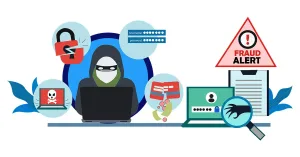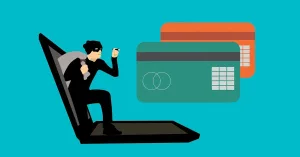As a private lender, it is urgent that you know all you can about financial fraud and which types of fraud are perpetrated most often. To help narrow the field down, MoneyThumb offers lenders the following list of the four most common types of financial fraud to watch out for:
The forms that fraud may take seem to be limited only by the imagination of the person committing the fraud, but the common types are:
- Check fraud — Dodgy checks bounce because there are insufficient funds to honor them, or are simply fakes. In either case, the away to avoid this type of fraud is to insist on bank checks or avoid checks altogether. The latter is quite easy in the age of electronic payments. If customers insist on payment by check, wait for it to clear before providing goods or services.
- Banking/identity fraud — This involves someone acquiring your banking details and then using them to steal from your account(s). Most electronic business banking systems offer multiple security steps for transactions — including security tokens, cross-authorization, etc. — so be sure to take advantage of these security measures. You should also be very conscious of keeping your staff details up to date, lest a departing employee accesses your accounts and steal money.
- Direct theft — Employees may ‘lift’ stock or pocket payments by failing to process the sale or deleting invoices. Keeping this type of fraud in check requires vigilance; make sure everyone working in the business knows that stock and payments are checked regularly.
- Invoices and payments fraud — These types of fraud rely on your business having less-than-perfect accounting practices that see automatic payments made for incoming invoices for something you haven’t ordered or received. Or payments are made to non-existent employees, or excess amounts paid to actual employees. To avoid this type of fraud, make sure any invoices you receive are checked against the goods or services ordered and that more than one person is involved in the processing of payments.
How Private Lenders Can Avoid Fraud
- Pull Information Directly from the Source
When lenders manually enter borrower information, such as bank documents and pay stubs, they make it easy for scammers to take advantage. Major incidents of lending fraud happen because borrowers can tell lenders anything they want during the application and funding processes. But lenders can avoid this headache by pulling pertinent documents directly from the sources, like employers and banks, and storing them on the blockchain. New technology also allows lenders to make information immutable, eliminating fraudulent borrowers’ ability to change data to benefit their scams. When lenders get information directly, they can act confidently in the knowledge that they have accurate applicant data.
- Create an Immutable Audit Trail
When everything lives on the blockchain, lenders can reference an obvious audit trail while verifying borrower information. There’s no need to track down documents; all the pay stubs and previous transactions are right there for everyone to see. Thanks to the blockchain, documents cannot be changed, greatly reducing the opportunities for borrowers to commit fraud.
Blockchain also does what no other technology or security practice can. If a fraudster wanted to change data on a blockchain network, that person would need to access and modify data stored in thousands of different places. Lenders who use the blockchain can rest easy knowing their documents are safe.
- Use In-House Training and Incentivize Spot Checks
Lenders should encourage their employees to spot-check applications regularly. Some lenders even require that employees verify that all documents and applications before a loan is considered.
If lenders withheld a loan until it is ensured applicant information was correct, borrowers might be less inclined to commit fraud in the early stages. Sometimes, a shift in responsibility is all it takes.
- Perform Due Diligence on Every Application
Lenders shouldn’t look briefly over application information; they should do real research alongside an underwriter to verify everything about the applicant. In the age of social media, it’s easy to verify personal claims with a bit of digging. Lenders can turn to LinkedIn, Facebook, Google Street View, and other accounts to ensure that every part of an application is correct.
And if someone claims to pull a six-figure salary from one company but shows employment from a different company on LinkedIn, then that borrower should be subject to follow-up questions. An unprofessional letterhead, rounded numbers, and other strange inconsistencies are also all signs of potentially falsified employment information.
Today, fraud can happen anywhere in the lending process, and it’s not easy to find. Of course, lenders should always practice vigilance, but they can only catch as much fraud as the tools available to them allow. It’s only with the power of the blockchain and close attention to detail that lenders can start to stem the rising tide of fraud. The problem can be overcome with innovative solutions and better practices. Lenders just have to implement them.
One final way lenders can avoid loan fraud is by using MoneyThumb tools. Our proprietary software can spot indiscretions and unusual loan application activity, such as a loan applicant listing an unrecognized bank. MoneyThumb has a version of our PDF financial file converters specifically designed for lenders. If you are a private lender, take a free test drive of our software today.





















Add comment